Introduction to Hermit Crabs Breeding
What are Hermit Crabs?
Hermit crabs are unique and fascinating creatures that belong to the crustacean family. They are known for their unique behavior of seeking out and moving into empty seashells, which act as their protective homes. These shell-dwelling creatures are found in tropical and subtropical regions and can be kept as pets due to their low maintenance requirements.
Why is Breeding Hermit Crabs Important?
Breeding hermit crabs is a challenging task that requires careful attention to their habitat and specific breeding conditions. However, it is an essential process for ensuring the survival and conservation of these fascinating creatures. Here are some reasons why breeding hermit crabs is important:
- Genetic Diversity: Breeding hermit crabs allows for the preservation and enhancement of genetic diversity within the population. This helps prevent the negative effects of inbreeding, such as genetic disorders and reduced fertility.
- Sustainability: By breeding hermit crabs in captivity, we reduce the pressure on wild populations, which are often harvested for the pet trade. Sustainable breeding practices help to conserve these creatures and maintain ecological balance in their natural habitats.
- Research and Education: Breeding hermit crabs in a controlled environment provides an opportunity for scientific research and educational purposes. It allows researchers to study their behavior, reproductive patterns, and developmental stages, leading to a better understanding of these species.
- Availability of Healthy Pets: Breeding hermit crabs in captivity ensures a steady supply of healthy pets for enthusiasts and pet owners. It reduces the need for capturing wild hermit crabs, which can be detrimental to their populations.
In conclusion, breeding hermit crabs is a challenging process but plays a crucial role in preserving their species and maintaining a sustainable pet trade. With proper care and attention to their specific needs, successful breeding can contribute to the well-being and conservation of these captivating creatures.
Hermit Crab Mating Behavior
Observations of Hermit Crabs Mating
When it comes to mating, hermit crabs display unique behaviors that ensure successful reproduction. Here are some common observations of hermit crabs mating:
- The male approaches the female slowly and gently grasps the dorsal meri of the chelipeds.
- The male quickly moves forward to turn the female onto her back.
- The abdomens of both the male and female are extended during this process.
- The male deposits the spermatophore, which contains the sperm, and then the pair disengages.
It is fascinating to witness these intricate mating rituals, which involve physical contact and precise movements.
Factors Influencing Mating Behavior
Several factors influence hermit crab mating behavior. Let’s take a closer look at these factors:
- Size Restrictions: Hermit crabs have specific size preferences when it comes to selecting mates. Females tend to choose larger males, as they are perceived to be stronger and more capable of providing protection.
- Mating Competition: Male hermit crabs often engage in fierce competition to secure mates. This competition can involve fighting over potential partners or competing for territory within their habitat.
- Role of Shells and Claws: The characteristic shells of hermit crabs may play a role in mating. Females may be attracted to males with larger or more elaborate shells. Additionally, the large right claw of male hermit crabs is believed to be used in mating displays and possibly in competition with other males.
- Parental Care: After successful mating, female hermit crabs carry their eggs and care for their young until they are ready to hatch. This maternal care is essential for the survival of the offspring.
Understanding these factors provides insight into the complex dynamics of hermit crab mating behavior and the strategies they employ to ensure successful reproduction.
In conclusion, hermit crab mating behavior is intriguing and involves specific rituals and behaviors. Factors such as size restrictions, mating competition, the role of shells and claws, and parental care all contribute to the mating process of these fascinating creatures. Further research into these behaviors can enhance our understanding of hermit crab reproduction and contribute to conservation efforts aimed at preserving these unique species.
The Male Approach
Slow Approach and Clasping of Dorsal Meri
Hermit crab mating involves a series of intricate behaviors. The male hermit crab approaches the female slowly, taking careful steps towards her. Once he is close enough, he gently clasps the dorsal meri of the chelipeds, which are the large claws located at the front of his body. This physical contact allows the male to establish a connection with the female before proceeding further in the mating process.
Turning the Female onto her back
After clasping the female’s dorsal meri, the male hermit crab quickly moves forward, exerting a gentle force to flip the female onto her back. This movement is crucial for successful mating, as it allows the male to position himself in a way that facilitates the transfer of sperm. Both the male and female extend their abdomens during this process, indicating their readiness for reproduction.
It is fascinating to witness these unique mating behaviors in hermit crabs. The male’s approach, gentle clasping of dorsal meri, and precise maneuvering to turn the female onto her back all contribute to the successful mating of these captivating creatures.
Factors Influencing Mating Behavior
Several factors influence hermit crab mating behavior, shaping the dynamics of their reproductive process. These factors include:
- Size Restrictions: Hermit crabs have specific preferences when selecting mates. Females tend to choose larger males, perceiving them to be stronger and better equipped to provide protection.
- Mating Competition: Male hermit crabs engage in fierce competition to secure mates. This competition involves fighting over potential partners and vying for territory within their habitat.
- Role of Shells and Claws: The shells of hermit crabs may play a role in mate selection. Females may be attracted to males with larger or more elaborate shells. The large right claw of male hermit crabs is believed to be used in mating displays and potentially in competition with other males.
- Parental Care: After successful mating, female hermit crabs carry their eggs and provide parental care until they are ready to hatch. This maternal care is crucial for the survival of the offspring.
Understanding these factors provides valuable insights into the complex mating behavior of hermit crabs. Further research into these behaviors can enhance our understanding of reproduction in these fascinating creatures and contribute to conservation efforts aimed at preserving these unique species.
The Mating Process
Extension of Abdomens and Spermatophore Depositing
During the mating process, both the male and female hermit crabs extend their abdomens. This extension is a crucial step in reproduction as it allows the male to deposit a spermatophore, which contains his sperm, into the female’s reproductive tract. The spermatophore is transferred from the male to the female through their specialized appendages.
Disengagement of the Mating Pair
After the spermatophore is deposited, the mating pair disengages from each other. The female hermit crab will then carry the sperm with her as she continues to develop and fertilize her eggs. This process can take several weeks or even months, depending on the species and environmental conditions.
It is important to note that hermit crabs reproduce through internal fertilization, unlike many other crustaceans that rely on external fertilization. This is one of the reasons why hermit crab mating behaviors are so fascinating and unique.
The intricate behaviors involved in the mating of hermit crabs demonstrate the complex nature of their reproductive process. From the male’s careful approach and clasping of the female’s dorsal meri to the precise maneuvering to turn her onto her back, each step plays a vital role in successful breeding. Factors such as size restrictions, mating competition, the role of shells and claws, and parental care further shape the dynamics of hermit crab mating behavior.
Understanding these behaviors and factors not only enhances our knowledge of these captivating creatures but also contributes to conservation efforts. By studying their mating behavior, we can gain insights into how to protect and preserve these unique species for future generations to enjoy.
Breeding Hermit Crabs in Captivity
Challenges and Considerations
Breeding hermit crabs in captivity presents its own set of challenges and considerations. While successful breeding has been achieved, hatching and raising land hermit crabs can be more difficult. Here are some factors to keep in mind if you are interested in breeding hermit crabs in captivity:
- Timing: Hermit crabs typically breed between February and August, with June and July being the peak months. Breeding your hermit crabs in the spring or summer may yield better results.
- Environmental Conditions: Creating an environment that meets all the needs of hermit crabs is essential for successful breeding. This includes providing the correct temperature, humidity, and substrate for the crabs to thrive.
- Shell Availability: Hermit crabs rely on shells as their protective homes. Ensuring an ample supply of suitable shells for breeding pairs is crucial. Without enough shells, hermit crabs may not feel secure enough to mate.
- Observation and Monitoring: Studying individual hermit crabs in the wild can be challenging due to their ability to change shell colors and even biological sex. In captivity, scientists have the advantage of closely observing and monitoring individual crabs throughout the breeding process.
Benefits and Advantages
Breeding hermit crabs in captivity offers several benefits and advantages for both scientific research and conservation efforts:
- Study of Individual Crabs: By breeding hermit crabs in captivity, scientists can study individuals more closely and gain new insights into their behavior and reproductive processes. This knowledge can contribute to a better understanding of how hermit crabs live in and maintain marine ecosystems.
- Conservation Efforts: Understanding the mating behaviors and factors influencing hermit crab reproduction can aid in conservation efforts. By protecting and preserving these unique species, we can ensure their survival for future generations to enjoy.
- Insight into Marine Ecosystems: Hermit crabs play a vital role in marine ecosystems, as they help to clean up decaying matter and recycle nutrients. By studying their breeding habits and behaviors, we can gain a deeper understanding of their ecological role and the impact they have on the overall health of marine habitats.
In conclusion, breeding hermit crabs in captivity provides an opportunity for scientists to delve deeper into the intricacies of their mating process. Despite the challenges, the knowledge gained from successful breeding can contribute to conservation efforts and enhance our understanding of these fascinating creatures.
Setting up the Breeding Environment
Tank Setup and Substrate Requirements
– To breed hermit crabs in captivity, it is important to provide them with a suitable environment. Start by setting up a 10-gallon tank.- Fill the tank with 2 inches of sand, which will serve as the substrate for the crabs.- Add some decorations like branches and vines to mimic their natural habitat and provide hiding spots.- It is also important to have a bowl of aquarium saltwater in the tank for the crabs to dip and refresh themselves.
Temperature and Humidity Control
– Maintaining the right temperature and humidity is crucial for the breeding success of hermit crabs.- Keep the tank temperature between 75 and 82 degrees Fahrenheit (24 to 28 degrees Celsius).- Regularly mist the tank with water to maintain a humidity level of around 70 percent.- Using a hygrometer and thermometer can help you accurately monitor the conditions inside the tank.
Challenges and Considerations
– Breeding hermit crabs in captivity is not without its challenges. Here are some important factors to consider: – Timing: Hermit crabs typically breed between February and August, with the peak months being June and July. – Environmental conditions: Creating an environment that meets all the needs of hermit crabs, including temperature, humidity, and substrate, is essential for successful breeding. – Shell availability: Hermit crabs rely on shells for protection. Ensuring an ample supply of suitable shells for the breeding pairs is crucial. – Observation and monitoring: Studying individual hermit crabs in captivity allows scientists to closely observe and monitor their behaviors throughout the breeding process.
Benefits and Advantages
– Breeding hermit crabs in captivity offers several benefits for scientific research and conservation efforts: – Study of individual crabs: Breeding in captivity allows scientists to study hermit crabs more closely, gaining new insights into their behavior and reproductive processes. – Conservation efforts: Understanding the factors influencing hermit crab reproduction can contribute to conservation efforts, protecting these unique species for future generations. – Insight into marine ecosystems: Studying the breeding habits and behaviors of hermit crabs helps us understand their ecological role and their impact on marine habitats.
In conclusion, breeding hermit crabs in captivity provides scientists with an opportunity to gain valuable knowledge about their mating process and contribute to conservation efforts. With proper tank setup and careful monitoring, breeding hermit crabs can be a fascinating and rewarding endeavor.
Caring for Hermit Crab Offspring
Nest Maintenance and Egg Incubation
Once the hermit crabs have successfully bred and laid eggs, it is important to provide the right conditions for nest maintenance and egg incubation. Here are some key considerations:- Nest setup: Create a separate nesting area within the tank using a mixture of sand and coconut fiber to resemble the crabs’ natural nesting environment.- Temperature control: Maintain the nest temperature between 74 and 78 degrees Fahrenheit (23 to 26 degrees Celsius) using a heating pad or lamp.- Humidity control: Proper humidity levels of around 80 percent are necessary for the eggs to develop. Regular misting and the use of a hygrometer can help monitor humidity.
Feeding and Growth Requirements
As the hermit crab larvae hatch and transition into megalopae, their feeding and growth needs change. Here’s what you need to know:- Food availability: Provide a combination of powdered spirulina algae, brine shrimp, and rotifers to feed the larvae. These can be purchased from pet stores or obtained from specialized suppliers.- Feeding schedule: Offer small amounts of food multiple times throughout the day to ensure the larvae receive proper nutrition.- Water quality: Maintain clean, filtered saltwater in a separate container for the larvae to swim and feed in.- Monitoring growth: Regularly observe the larvae’s growth and development to ensure they are progressing well. Consult with a hermit crab specialist or veterinarian for any concerns or questions.
Remember, breeding hermit crabs in captivity requires meticulous attention to detail and careful monitoring of environmental conditions and the offspring’s well-being. It’s a challenging but rewarding experience for those interested in scientific research, conservation efforts, or simply observing the fascinating journey of these unique creatures.
Summary
Breeding hermit crabs in captivity presents an opportunity for scientists to gain valuable knowledge about their reproductive processes and contribute to conservation efforts. By providing a suitable breeding environment, maintaining optimal conditions, and carefully nourishing the offspring, hermit crab enthusiasts can observe and study the intricate journey of these captivating creatures. With dedication and careful management, breeding hermit crabs can offer a deeper understanding of their behavior, ecological role, and the importance of protecting these species for future generations.
Troubleshooting and Common Issues in Hermit Crab Breeding
Handling Infertile Eggs and Failed Mating Attempts
It is common for hermit crabs to lay infertile eggs or for mating attempts to be unsuccessful. In such cases, there are ways to handle these situations:
– Infertile eggs: If eggs are not developing or showing signs of hatching after a few weeks, they are likely infertile. It is important to remove these eggs from the nest to prevent molding or contamination.
– Failed mating attempts: If hermit crabs are not successfully mating, it may be necessary to try different pairs or adjust environmental conditions to simulate their natural breeding behavior. Observing specific behaviors or preferences exhibited by the crabs during mating attempts can provide insights for improvement.
Dealing with Health Problems in Breeding Hermit Crabs
Breeding hermit crabs can present health issues that need to be addressed promptly. Some common problems and their solutions include:
– Shell disputes: Hermit crabs may engage in shell fights during mating, resulting in injuries. Recognizing signs of aggression or shell damage and separating the crabs can prevent further harm.
– Molting issues: Stress during breeding can affect the crucial molting process. Providing sufficient hiding spots and substrates, as well as ensuring suitable tank conditions, can promote successful molting.
– Disease prevention: Breeding crabs may be more susceptible to diseases due to stress and changes in conditions. Regular cleaning and disinfecting of the tank, maintaining proper humidity and temperature levels, and observing crabs for any signs of illness are essential. Consultation with a veterinarian familiar with hermit crabs is recommended if needed.
Remember, breeding hermit crabs in captivity requires careful observation, problem-solving, and attention to detail. Be prepared for unforeseen challenges and be willing to make adjustments to ensure the health and well-being of the crabs and their offspring. Good luck on your breeding journey!
Conclusion
Success Stories and Celebrating Hermit Crab Breeding Efforts
Breeding hermit crabs in captivity is a remarkable accomplishment, and those who have successfully bred these creatures should be celebrated for their dedication and efforts. These success stories highlight the potential for captive breeding programs to contribute to the conservation and understanding of hermit crab populations and their ecosystems.
Future Directions and Research Opportunities
The breeding and rearing of captive-bred hermit crabs offer valuable opportunities for continued research. Some potential areas of exploration include:
– Further understanding the breeding behaviors and preferences of hermit crabs to improve success rates.
– Investigating the impact of captivity on the overall health and genetic diversity of captive-bred hermit crabs.
– Exploring the potential ecological benefits of reintroducing captive-bred hermit crabs to their natural habitats.
Continued efforts in breeding hermit crabs and research can provide valuable insights into these fascinating creatures and contribute towards their conservation and well-being.
Frequently Asked Questions about Hermit Crab Breeding: Insights into the Breeding Habits of Hermit Crabs
Q: Can hermit crabs reproduce in captivity?
A: Yes, hermit crabs have been successfully bred in captivity by many hobbyists.
Q: What age do hermit crabs need to be in order to breed?
A: Female hermit crabs will need to be at least two years old, while male hermit crabs can start breeding as young as one year old.
Q: Do hermit crabs need a special habitat for breeding?
A: Yes, providing a suitable breeding habitat is crucial. It should include a shallow water dish for the female to release her eggs and a separate area for the male to transfer his sperm.
Q: How do hermit crabs mate?
A: During mating, the male hermit crab grasps the female’s shell with his legs and inserts his reproductive organ, called the gonopod, into the female’s shell opening to fertilize her eggs.
Q: How long does the breeding process take?
A: After successful mating, the female will carry the fertilized eggs under her abdomen for about two to three weeks.
Q: How do hermit crabs hatch from their eggs?
A: Once it is time for the eggs to hatch, the female releases them into a shallow water dish. The larvae hatch as tiny planktonic organisms and go through several stages of development.
Q: How long does it take for hermit crab eggs to hatch?
A: The larvae will remain in the water for several weeks, undergoing molts and transformations before developing into small hermit crabs.
Q: What should I feed the baby hermit crabs?
A: Baby hermit crabs require a specialized diet, which includes nutritious foods such as small pieces of fresh seafood, algae, and commercially available powdered foods designed for crustacean larvae.
Q: Should I separate the baby hermit crabs from the adults?
A: It is recommended to separate the baby hermit crabs from the adults to prevent accidental injury or cannibalism. Provide them with a suitable enclosure and maintain the appropriate environmental conditions.
Q: How long does it take for hermit crabs to reach maturity?
A: It usually takes about one to two years for hermit crabs to reach maturity, depending on the species and their environment.
Q: Is breeding hermit crabs difficult?
A: Breeding hermit crabs can be a challenging endeavor as it requires careful monitoring of water quality, temperature, humidity, and nutrition. It takes patience, knowledge, and experience, but it can be a rewarding and educational hobby for enthusiasts.
In conclusion, breeding hermit crabs can be a fascinating experience. It is important to provide appropriate habitats, monitor environmental conditions carefully, and offer the necessary nutrition to ensure the successful breeding and development of these unique creatures.
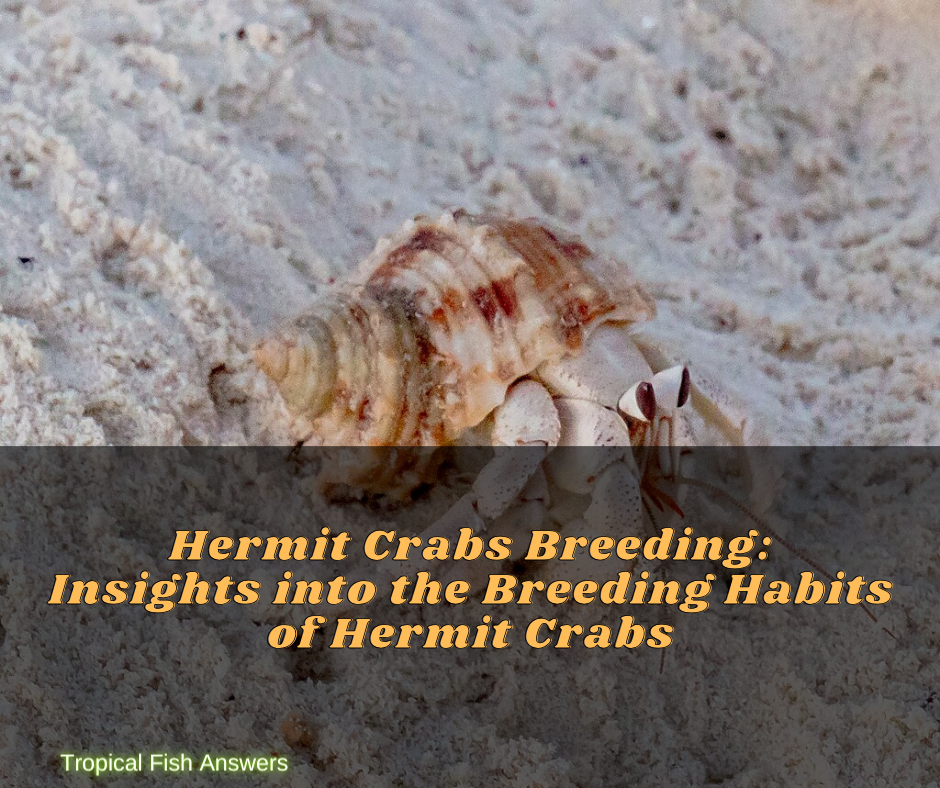
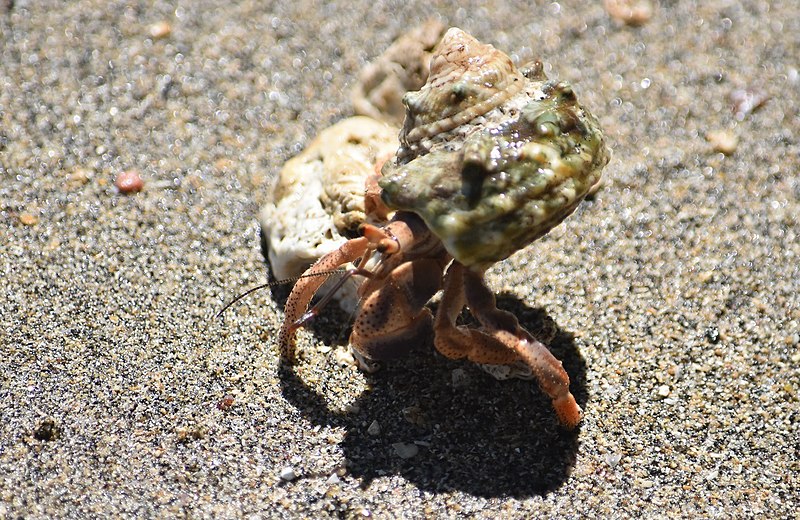
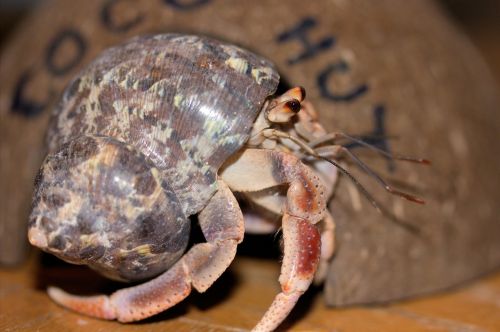
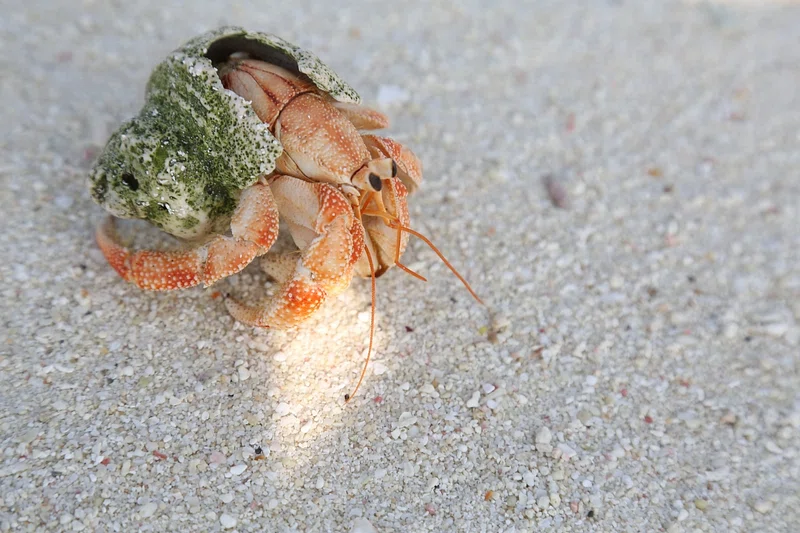
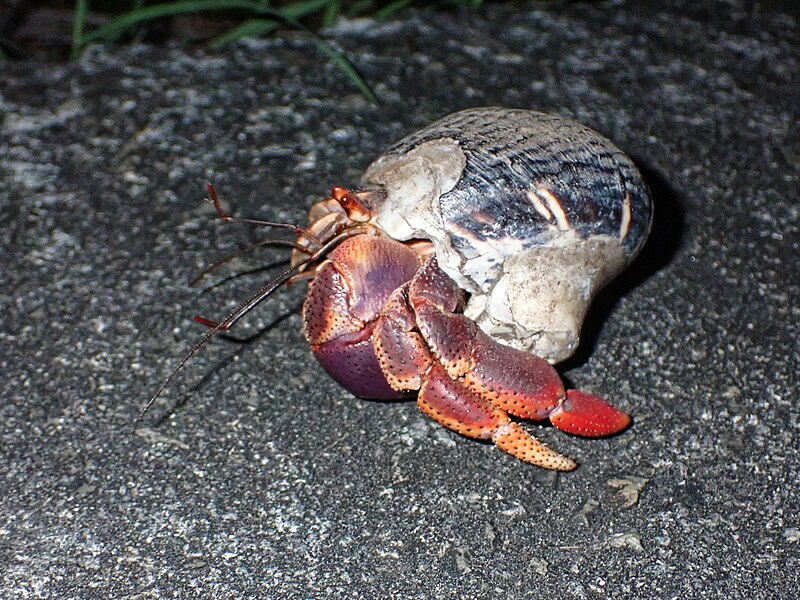


One thought on “Hermit Crabs Breeding: Insights into the Breeding Habits of Hermit Crabs”